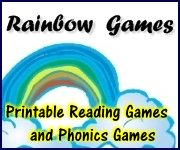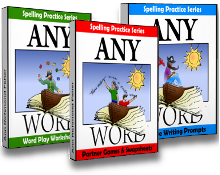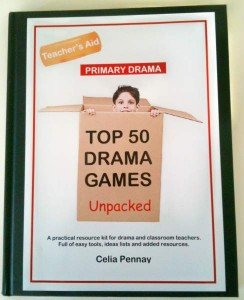How to Write an Editorial: Your Students' Opinions Matter!
Know how to write an editorial? Your students have opinions about everything, so why not teach your class to put their views persuasively on paper? Let's write an editorial using three easy lessons! First, a quick review of what defines an editorial. Make sure your students understand this basic definition. Editorials are opinion pieces for newspapers and magazines, either in print or online. An editorial expresses an opinion about a current issue or topic. If no opinion exists, then the article is considered an expository text. The author of an editorial expresses a specific bias, with the intent of persuading the reader toward particular thoughts or actions.
First, a quick review of what defines an editorial. Make sure your students understand this basic definition. Editorials are opinion pieces for newspapers and magazines, either in print or online. An editorial expresses an opinion about a current issue or topic. If no opinion exists, then the article is considered an expository text. The author of an editorial expresses a specific bias, with the intent of persuading the reader toward particular thoughts or actions.
Now that we've reviewed the basic substance of an editorial, let's learn how to write an editorial using three simple lesson ideas. First, we'll identify the elements of persuasive writing used in writing editorials, then we'll identify the differences between facts and opinions, and lastly, we'll practice crafting logical, well-supported reasons to support that all important topic!
Lesson 1: How to Write an Editorial: The Elements of Persuasion
- Step 1: Ask your students to think of times when they have attempted to persuade someone, whether friends, parents, teachers, coaches, or others. Discuss with your students whether or not they were successful in their attempts at persuasion. What made those attempts successful? Discuss the reasons behind successful persuasion: using sound reasoning, using facts to support a position, and using a respectful tone.
- Step 2: Now explain to your class that an editorial is a form of persuasive writing, the main parts being the following: the title, the topic sentence, examples or evidence to support the topic sentence, and a conclusion. Distribute samples of editorials you've collected beforehand from newspapers or magazines. With your students, identify the title, the topic sentence, the evidence and examples, and the conclusion within each editorial. Have the class determine whether or not they think the authors of these editorials were successful in persuading their readers to specific points-of-view. Why or why not? Use the following outline as a guide for evaluation:
- Editorial topic:
- Title:
- Intended audience:
- Purpose of editorial:
- Topic sentence:
- Supporting details (facts, professional opinions, examples, statistics, etc.)
- Conclusion:
- In your opinion, do you think this editorial was persuasive? Why or why not? Give specific examples.
- What suggestions do you have for the author of this editorial?
- Step 3: Brainstorm a list of editorial topics. Have each student select a topic, and then research and write a rough draft of an editorial. Remind your class to include each part of an editorial. Exchange drafts with partners for feedback on whether the editorial displayed successful persuasive writing. Revise and strengthen the writing as necessary.
Lesson 2: How to Write an Editorial: Facts and Opinions
- Step 1: With your students, review the differences between facts and opinions. Remind them that an opinion is a belief held by a person, whereas a fact is a specific statement which can be proven true.
- Step 2:Distribute blank slips of paper to your students, instructing them to write a fact on one side and an opinion on the other. Collect these paper slips, mix them into a bowl or box, and pull out one slip at a time. Read each side of each paper slip, and have the class determine which statement is the fact and which statement is the opinion.
Step 3: Remind students that factual information is needed to support an editorial's topic sentence. An editorial supported only by opinions would not be highly persuasive to a reader, as it lacks authority. Distribute newspaper and magazine editorials you've collected beforehand. Have students locate examples of facts and opinions, highlighting each with alternate colors. Discuss your findings together.
Lesson 3: How to Write an Editorial: Supportive Reasoning
- Step 1: Brainstorm a list of editorial topics, and have students select a topic of their choice. On separate sheets of paper, ask them to list facts that support their opinion about their topic of choice. Then have them number their facts in the order of importance that would be most convincing to an audience.
- Step 2: Take a trip to the school media center or computer lab. Have your students research their selected topics further. With access to the Internet, encyclopedias, books, magazines, newspapers, and other sources, students can confirm, expound, and clarify their reasons to further support the topics they've selected.
- Step 3: Once they've finished and collected their research, have students organize and write their editorials. Here is an organizer for their use:
- Editorial topic:
- Topic sentence:
- Reason #1 and support (Be sure to use facts and not just opinions.)
- Reason #2 and support (Be sure to use facts and not just opinions.)
- Reason #3 and support (Be sure to use facts and not just opinions.)
- Conclusion: How will you close and wrap up this editorial?
- Have students then evaluate each other's editorials. Was the editorial written persuasively? Why or why not?
With these three lessons, your students now have a solid understanding of how to write an editorial. Don't be surprised if you find spontaneous, convincing editorials on your desk regarding the cafeteria menu, the amount of homework assigned, or listening to music in the classroom!
You never know!
A fun bonus project: assign editorial topics or suggestions based upon familiar fairy tales. Should a prince choose a bride based upon whether a girl's foot fits a certain glass slipper or a young lady can feel a pea most uncomfortably through twenty mattresses? Or perhaps an opinion piece on American tall tales! Was Paul Bunyan practicing ecological stewardship by logging the Pacific Northwest and then carelessly carving out the Grand Canyon? Write editorials about the behavior of animals in different fables. Should the ants have shown more compassion to the hungry grasshopper in the dead of winter?
Teach your kids how to write an editorial, and then apply the format to any number of literary genres!
Have fun!
Return from How to Write an Editorial to Creative Writing Lesson Plans
Return from How to Write an Editorial to Creative Writing Ideas and Activities
Helping You Write Across the Curriculum!
copyright 2009-2013 www.creative-writing-ideas-and-activities.com
Our Most Popular Pages
5. Writing a Personal Narritive
10. Elements of Persuasive Writing
Recommeded Resources:
AnyWord(TM) Spelling Practice Series!
Worksheets, games and activities to use with any spelling words. Three volumes in all!
Stop Essay Pain!
LitWorks.com
Resources to help students prepare for literature examinations.
Teach Kids Drama!








